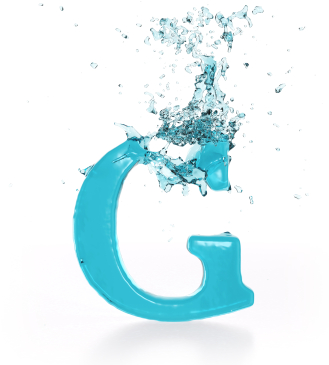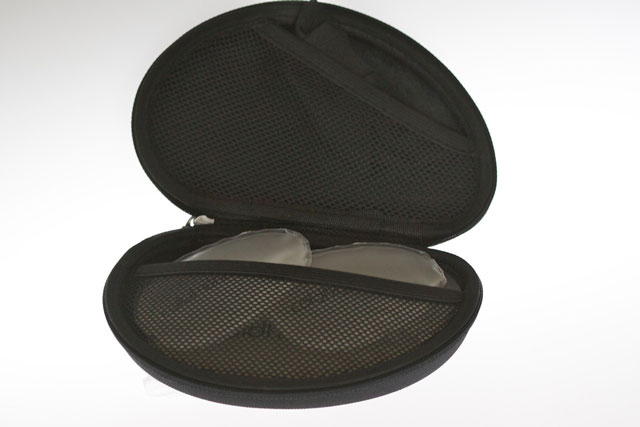When it comes to exercise, watercress might be the ticket
Watercress and exercise? Who would have thunk that this peppery wonder veg may help to protect against cellular damage that results from high level exercise? Mind you, this initial information comes from a miniscule study of 10 men but it may carry some important information to file for the future.
Watercress is one of the oldest green vegetables known to man and evidently can be traced back to ancient Greece and Persia. But regardless of its history, this salad green is a good source of vitamins C, A, E and K, and is rich in antioxidants, so much so that when ingested, it may help to reduce oxygen free radicals that can cause damage to cells, including those that are generated during extreme, exhaustive exercise (i.e. to the point near fatigue).
In this study, which appears in the British Journal of Nutrition, 10 healthy men in their early 20s ate roughly 3 ounces of fresh watercress in a single sitting for eight weeks. They then got on a treadmill and were tested to exhaustion. Thereafter, they stopped eating watercress for another 8 weeks and repeated the test. Both times, researchers drew blood. In the second half of the study, half the men stopped eating watercress, and half ate the same amount as before with water, rested for two hours and then completed the same exercise test while the other half didn’t eat watercress but did drink water and repeated the test.
The results?
Exercising to exhaustion did induce damage to the men’s DNA. However, eating watercress appeared to reduce the degree and extent of the damage, both in the short and long-term and men who did not eat the watercress in the second half of the study had more DNA damage than those who did. What’s more, watercress did not have an accumulative effect; in fact, eating it just two hours prior to exercise appeared to boost its protective properties.
In a related press release, lead researcher Dr. Mark Fogarty explains that “the increased demand on the body for energy can create a build-up of free radicals which can damage our DNA. What we’ve found is that consuming a relatively small amount of watercress each day can help raise the levels of important antioxidant vitamins which may help protect our bodies, and allow us to enjoy the rewards of keeping fit.”
In fact, watercress is one of the most antioxidant-rich green leafy vegetables available. Its protective effect may be the result of high concentrations of sulfur-containing nutrients known as glucosinolates (which are also found in broccoli, cabbage, brussel sprouts, cauliflower and cabbage) and carotenoids (plant pigments that the body converts to vitamin A that also protect against free radical damage). Watercress is also known to boost the beneficial action of other antioxidants, including beta-carotene, alpha-tocopherol and ascorbic acid.
Clearly, watercress needs to be studied in greater numbers of men and women and in different age groups. In the meantime? Eating watercress can’t hurt and may even help with much needed post-exercise repair.
Read MoreHappy Birthday!
I know a few fine women with birthdays this month. Bet you do too. So in their honour, I am simply saying, if you can’t find any matches…
It’s Friday! Time for some folly and fun!
Read More
Wednesday Bubble: Give me a “G!!”
I am so happy about this particular unburstable bubble that I’m almost jumping for joy! Give me a G!
Yup, that elusive G spot that so many women have been talking about for centuries evidently truly exists according a new report slated to appear in the Journal of Sexual Medicine.
Say what?!!!
As many of you know, the “G spot” is a description for an area on the upper back vaginal wall that, when engorged, can significantly enhance arousal and orgasm and even allow women to ejaculate. And yet, not one scientist has been able to anatomically confirm its existence, leading most experts to characterize it as a ‘gynecologic myth.’
Well, myth no more and for this discovery, you can thank Dr. Adam Ostrzenski from the Institute of Gynecology in St. Petersburg, FL. Dr. Ostrzenski and his colleague, Dr. Hab dissected the vaginal wall layer by layer and finally established that the G spot is actually a sac structure that is located on the back membrane of the perineum (the space between the vaginal and anal opening), angled about 35° from the side border of the urethra, with its lower section situated a little over a half inch from the opening of the urethra. According the researchers, the G-spot is well defined, appears to comprised of erectile tissue and has a head, a middle and a tail.
I realize that this is all a bit highbrow and scientific. However, this discovery is important, not only for helping to inform and further what we know about what makes us tick sexually, but also because it supports earlier research that suggests that the rear of the vagina and urethra, and not just the clitoris play a role in arousal and orgasm. And this confirmation alone may ultimately help women who struggle with sexual desire as they age find other ways to address their sexual needs.
So, today, give me a G! It hits the spot…no?!
Read More
Forecast: there’s a Coldfront moving through
“Cold front” you say? But it’s Spring in the Northeast and temps have been pretty warm.
Nope, not Cold Front, but Coldfront®, a new personal cooling system designed to cool flashes when they hit.
Coldfront is not unlike Cleavage Coolers, the revolutionary product that fits right into your bra like rubber chickens. However, these nifty little Coldfront packs fit into a container the size of a sunglass case, are the size of your palm and reportedly soft to the touch and stay cold all day because of a built-in cooling core. When those hot flashes hit, just pull one of these babies out and palm those sweats right out of your life. No drugs and a reusable cloth that wicks moisture away. The company describes Coldfront as “safe, effective, discreet, convenient, mess free, environmentally friendly” and best of all: “elegant.”
I’m not entirely sure about the last adjective and hardly believe that the carrying case would easily double as a purse on a night out on the town. Still, Coldfront is not the first product based on cold technology to address the body’s sudden inability to regulate its internal thermometer. And yet, at a pricepoint of $50, it seems like a reasonable investment compared to other HRT alternatives that require a bit more of a time and financial commitment.
I have not seen the product nor do I know anyone who’s used it. Personally, I am a bit skeptical but it’s my job to be. And, I never truly believe testimonials on a website; what company publishes negative feedback? What’s more, the product, like cleavage coolers, the bedfan, the chillow, chillipads and gelmats, all rely on a woman who wants some ice, ice, baby! I dunno, but I run hot/cold on this whole approach.
Have you heard of Coldfront? Have you personally used the product? Inquiring minds need to know!
Read MoreNewsflash! Trust your gut: HRT and ulcerative colitis
Ulcerative colitis is a type of inflammatory bowel disease that causes inflammation and sores in the lining of the large intestine. The disease affects men and women in equal numbers and risk is higher among Caucasians and Jews. Yet, although it most commonly develops between the ages of 15 and 30, ulcerative colitis has a brand new bag, so to speak: women in menopause taking hormone replacement therapy (HRT). Yikes! Another nail in that HRT coffin. And this time, both combination hormone therapy (i.e. estrogen plus progesterone) and estrogen only appear to play a role.
Investigators will be reporting study findings (which are derived from following more than 108,000 postmenopausal women enrolled in the Nurses Health Study) at the American Gastrointestinal Association’s Annual meeting next month. Information on this group of women was updated every two years for 32 years, including menopausal status, use of hormones and medical diagnoses. The findings? Compared to women who never used hormones, women who did, regardless of type, had a 1.7 times greater risk for developing ulcerative colitis. Notably, this risk increased with longer duration of hormone use and decreased the longer the time period since stopping hormones. In fact, risk declined by almost 25% in women who had discontinued hormones for five or more years.
It was once believed that stress caused ulcerative colitis but experts now hypothesize that it’s triggered by a virus or bacteria that attacks the immune system, or is hereditary. So where do hormones come into play? Apparently, estrogen may play a role in controlling how the lining of the intestine functions to keep out toxins but let in nutrients, electrolytes and water as well as inflammation. Replacing estrogen with hormone therapy may act to create an imbalance that sends the system into overdrive but researchers are still not clear how and why.
Meanwhile? Hormone replacement therapy may increase your risk for developing ulcerative colitis as you age. You should always trust your gut. What is it telling you about HRT?
Read More











